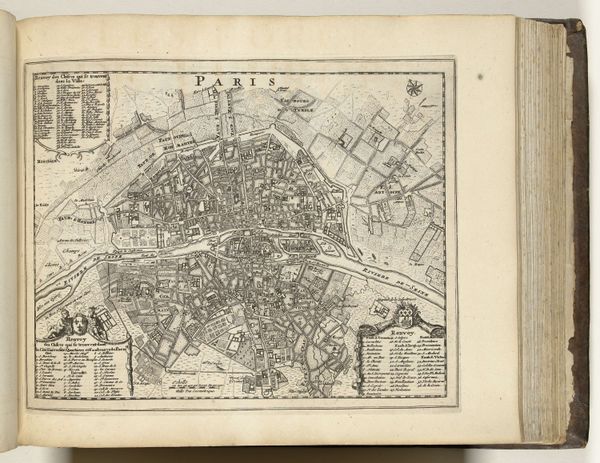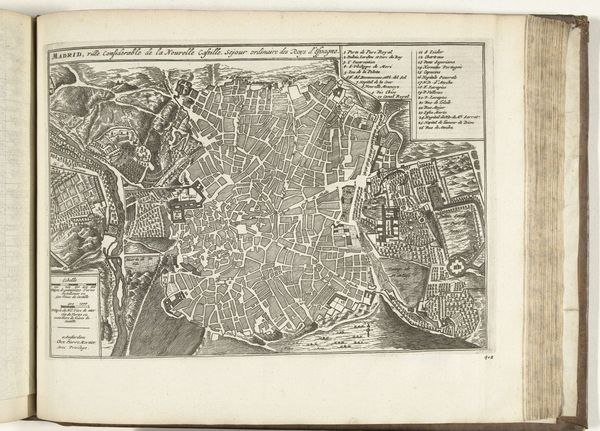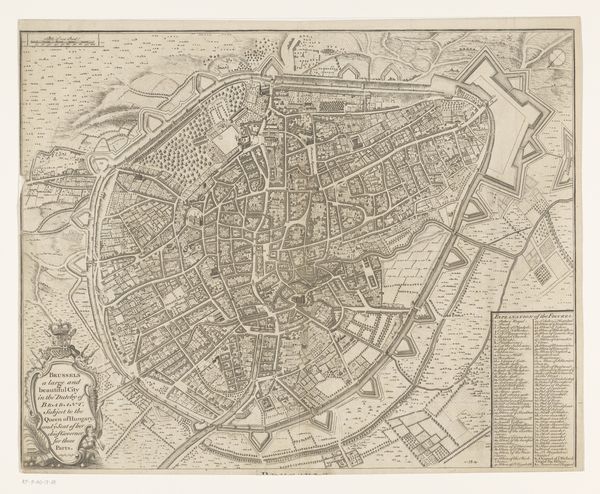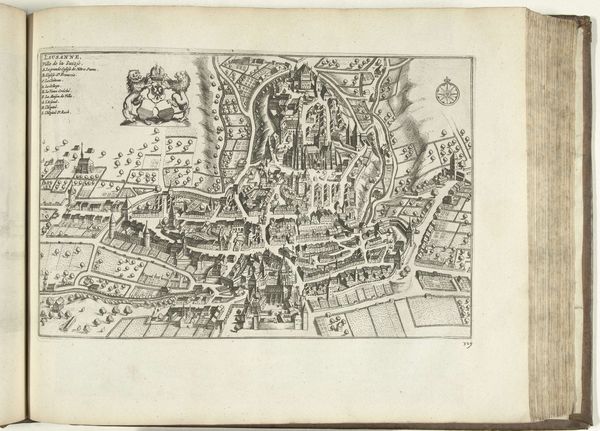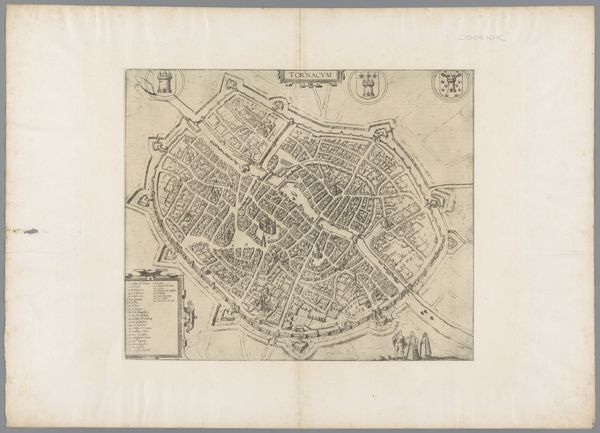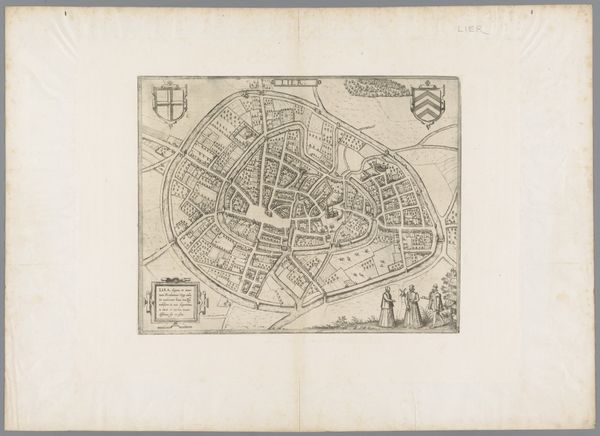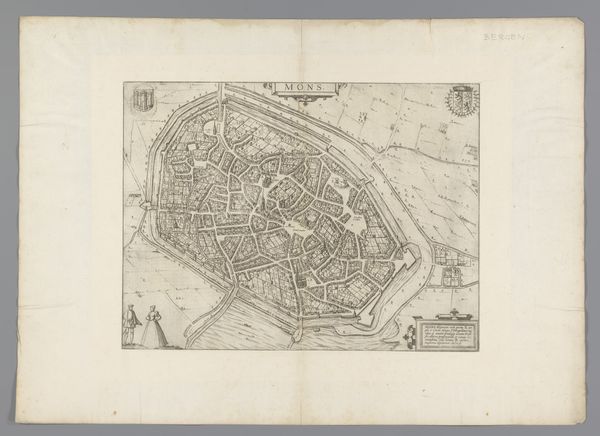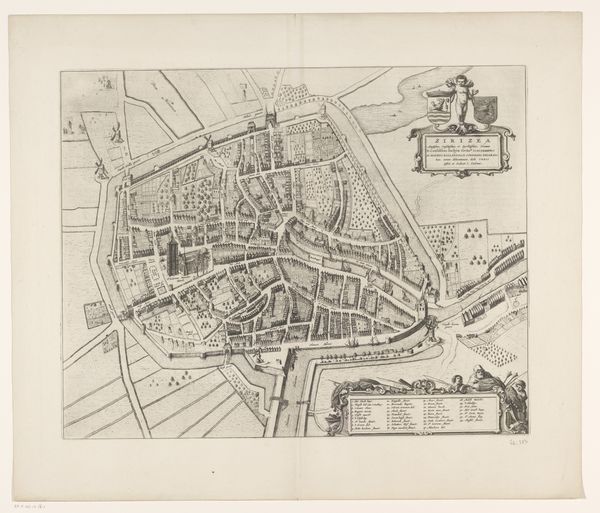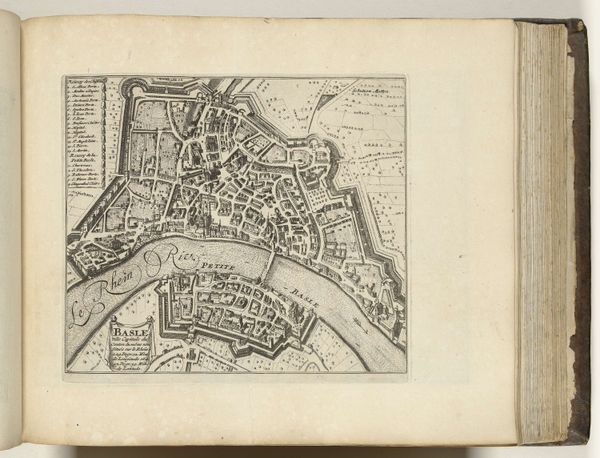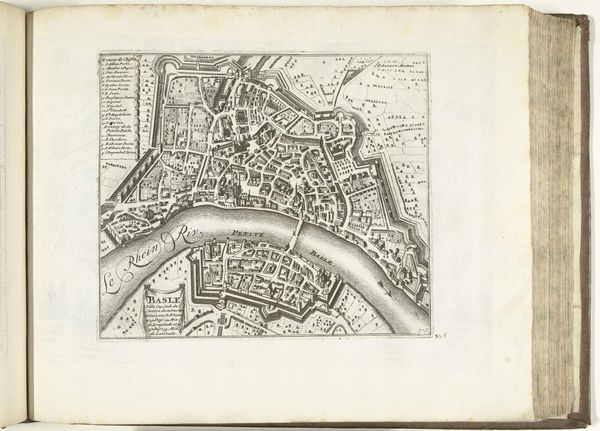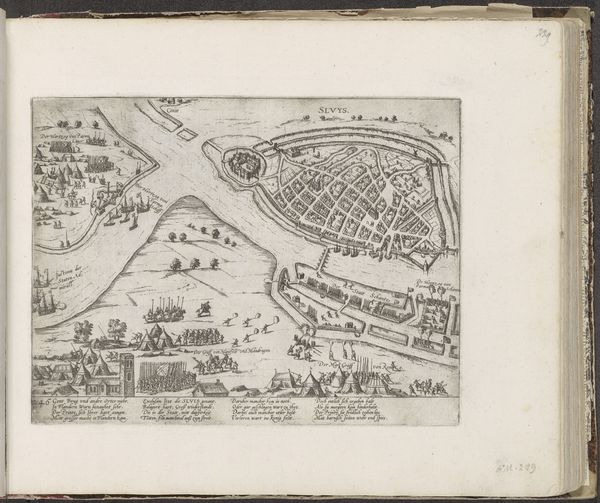
drawing, print, engraving
#
drawing
#
baroque
# print
#
pen sketch
#
old engraving style
#
cityscape
#
engraving
Dimensions: height 240 mm, width 300 mm
Copyright: Rijks Museum: Open Domain
Curator: At first glance, it strikes me as overwhelmingly dense, a testament to the intricate network that forms this urban tapestry. The interplay of line and form yields an unexpectedly dynamic composition, despite its representational purpose. Editor: This is indeed an anonymous “Plattegrond van Parijs” created in 1726. Produced using print, drawing, and engraving techniques, it is now housed in the Rijksmuseum. Consider this print within the broader historical context of Parisian urban planning and the rise of cartography as a tool of state power. Curator: Absolutely. Look at how the strict linearity of the street grid is meticulously rendered, creating these compelling geometric patterns that divide the space. Even the seemingly decorative cartouches conform to this rigid formalism, adding to the sense of ordered precision. Editor: That precision speaks to the Baroque period’s obsession with control and order. Remember that Paris, even then, was a major European power center. Maps like these weren't just navigational tools, but declarations of dominance. Think about the symbolic power of depicting, and thereby claiming, control over such a vast territory. Curator: An excellent point! Yet, despite that underlying purpose, the lines have a vitality. Notice how variations in the engraving imbue certain sections with emphasis, directing the viewer's eye to key architectural landmarks that establish compositional rhythm and unity throughout the design. Editor: Furthermore, it illustrates how the elite perceived Paris—an idealized, rational space. In reality, the streets were likely far more chaotic and unsanitary than this depiction suggests. So we might view it less as an accurate document, and more as propaganda reflecting socio-political ambitions. Curator: It’s this constant negotiation between form and function that truly excites me, even now! How can one single composition successfully convey both a precise objective, and reveal so much ideological subtext through aesthetic choice? Editor: Right. The aesthetics serve political and social ends, subtly shaping the perception of Paris both within and beyond its borders. I'll now regard it, not just as an old map, but also a window onto the values and ambitions of early 18th century France.
Comments
No comments
Be the first to comment and join the conversation on the ultimate creative platform.
